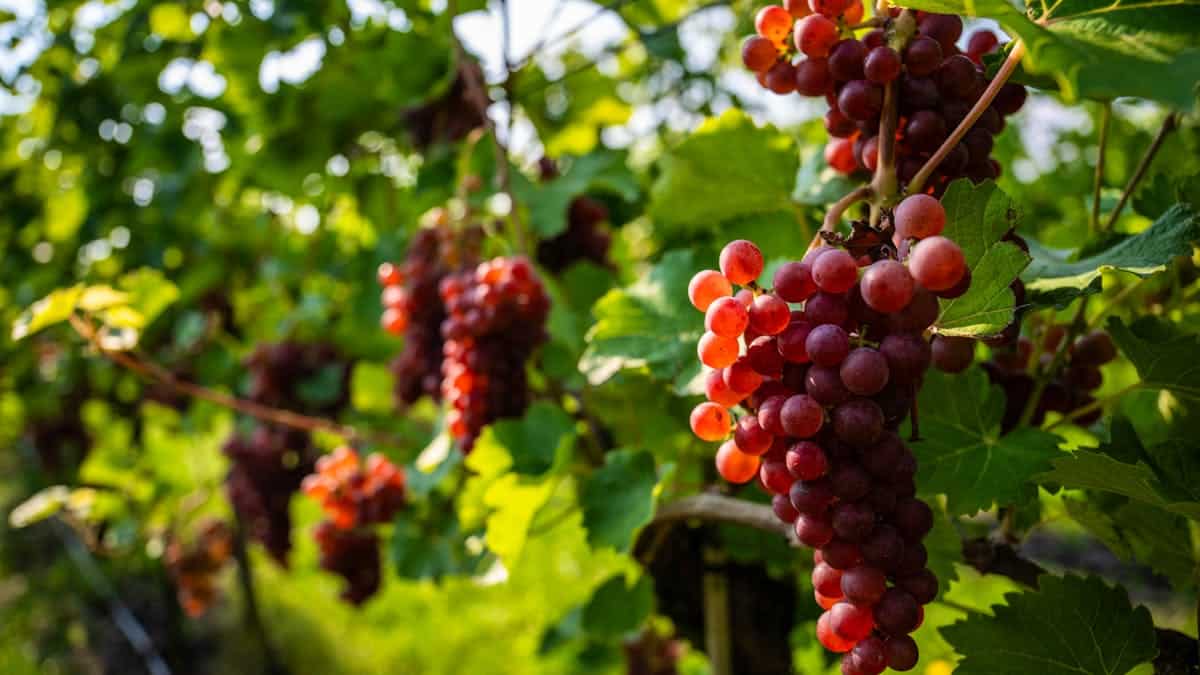The generous foliage of the vines hides the dozen harvesters at work on the hill, in this hot morning in September. It looks like the South, but we are in the north of Germany, where climate change transforms viticulture.
“When I started here, in 1996, harvests began around October 1. Today we are starting on September 1, ”says the Manfred Lindicke winemaker at the time of the break.
Arranged on sandy soil, its 7.6 hectare domain dominates the Havel river and the village of Werder, 35 km from Berlin. Or the 52nd northern parallel, with the same latitude as Mongolia or Alaska. This makes its “quality” certified wine, with protected designation of origin (AOP), one of the most northern in Europe.
Renaissance
Attested in the Middle Ages in the region, the culture of vines disappeared “because of frost and economic difficulties” in the middle of the 19th century, traces Manfred Lindicke.
It is reborn after reunification, carried by the passion of pioneers, helped by the increase, since 1990, of more than one degree of average temperature between April and October, according to the German wine institute (DWI).
Since 2016 and the relaxation of European rules, the planting of vines has been authorized on more than 200 hectares of land in northern Germany. About twenty farms have switched to Basse-Saxe (northwest), a region bordered by the North Sea.
“Adapted temperatures”
“We now have adapted temperatures,” says Jan Brinkmann, president of the wine association of this land.
More freshness and water than in the south: on 1.5 hectares, this young farmer therefore replaced his cereals with three grape varieties to have “something less vulnerable”.
“It takes time” so that his table wine becomes a quality product, he admits.
Already convincing
Light and fruity, the Pinotin de Werder is already convincing. “We have more sun and wine is constantly improving. Especially red, ”says Peter Weymann by cutting bunches from Lindicke.
White shirt stained with grapes, this 71 -year -old volunteer harvester believes that “German winegrowers no longer need to hide in front of the Italians and Spanish”.
An enthusiasm tempered by his friend Manfred Lindicke. He deplores “increasingly early harvesting”, “sunburn” which can damage certain varieties and “drought” which forced him to arrange an irrigation system with a drop by drop. But also hail, late frosts and “excessive” rains.
Medal reverse
If the German winegrowers are “still globally winning in the face of climate change”, according to the DWI, the increase in these extreme phenomena constitutes the “back of the medal”.
They must also face diseases: Mildew after spring and humid summers, stop during dry and hot summers, “black wood” transmitted by an insect arrived from southern Europe, fly of vinegar …
In Lower Saxony, climate change makes viticulture “possible”, but also “always more difficult”, sums up Jan Brinkmann.
To deal with these plagues, new so -called “Piwi” grape varieties, “Mushroom resistant”, were located on more than 3% of the country’s wine -growing area, and more than half that of Manfred Lindicke.
These adaptation efforts are added to a difficult economic environment, especially since the COVVI-19 and the decline in demand. The Germans prefer inexpensive wines of European neighbors. “If you get a Sauvignon Blanc de France for 2.50 euros” in a supermarket, “and you have to pay 12 or 15 euros for mine, that does not make sense”, breathes Manfred Lindicke.
At 75, the winemaker is therefore still looking for a buyer.

